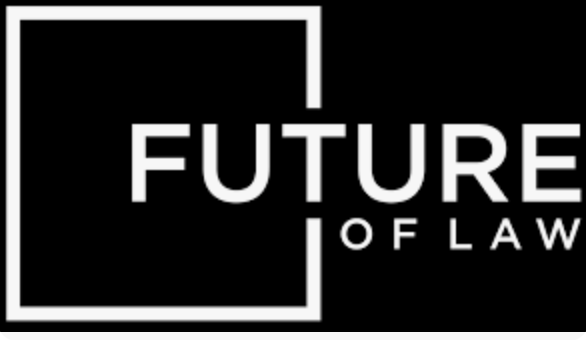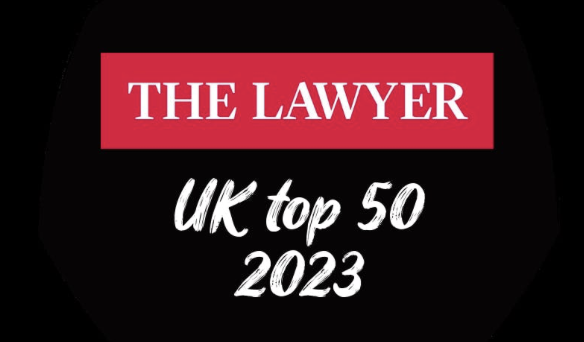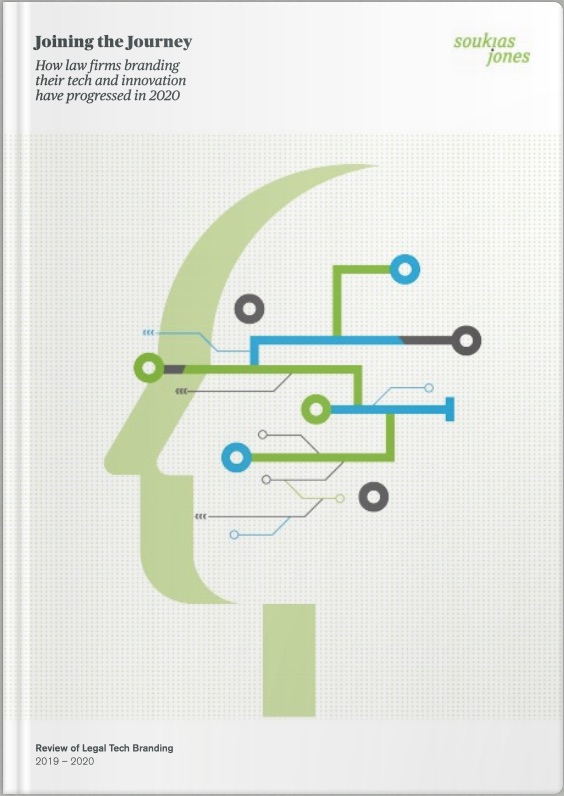Issue 10 – Autumn 2023

News and Views on branding tech and innovation by law firms
News
New brands and refreshed ones.
Firms have been busy introducing new brands and revitalising others to help strengthen their positioning. Here are a few recent examples.

Strengthening its positioning: Ashurst Advanced updates its image
Ashurst recently launched a refreshed brand identity, claiming it “reflects our people and the innovation firm that we are today”. The centrepiece is the new brand promise ‘Outpacing Change.’ The firm claims the approach has supported its 200-year history, and is very much relevant today for how it serves its clients. The firm cites how ‘technology, innovation and flexible delivery’ underpin its solutions, referencing the firm’s NewLaw division, Ashurst Advance. Hats off to the firm for a creating a through line from its corporate narrative and story for technology and innovation (T&I). This makes the story more compelling. Other firms fail to do this and keep both separate, making their overall story weaker and more disjointed. One observation, however, is that Ashurst still uses the phrase NewLaw for describing T&I. But is T&I now really still new?

New brand. New approach from Hogan Lovells
Hogan Lovells launched its new standalone technology brand Eltemate in July. Positioned as ‘A Hogan Lovells Technology Brand’, the new brand will unite a team of over 40 people working exclusively on legal tech.
Like Reed Smith and its technology driven brand Gravity Stack, Eltemate is keeping a line of separation from the parent brand. Presumably to provide the flex to build the business free from the constraints (and associations) of its LLP parent.
The brand identity doesn’t leverage any of the visual assets of its famous parent brand. It instead uses blue and the Allerons condensed font (originally designed for an experimental project for aircraft models in the 40s). The combination conveys an air of significance, yet it leans towards a more conventional image. This might be considered incongruent with how the majority of agile B2B technology brands aim to present themselves. The name is made-up. Without meaning, and lacking any of the visual assets of Hogan Lovells, it will take investment and time to develop brand awareness and understanding in Eltemate.
But the bigger question is, will more firms join Hogan Lovells and Reed Smith in establishing their own standalone brands? We posed this question in our recent survey of the top 50 UK law firms and set out the results of this in our later article ‘Branding the Business of Law in 2030’.

Beware: The power of A&O Shearman
“We’re ready, ready to create a new breed of law firm, integrated as one across the globe” – powerful stuff. As partners at both firms voted in favour of creating A&O Shearman, their social media announcement made the intentions behind the merger clear. The newly combined firm promises to ‘Transform the Now’. No doubting the depth and breadth of their resources to pull this off. Within the business of law, the combined expertise and experience is impressive. From the tech, resourcing and advisory unit (Advanced Delivery & Solutions) and the technology innovation hub (Fuse) at A&O, to Shearman & Sterling’s Legal Operations by Shearman group, this mix gives them the potential to transform the business of law both now and tomorrow!

Shoosmiths and DLA make it easier for clients to engage with them
We mentioned how Ashurst used its brand refresh to update its story in the business of law. Popular approach. No least for tackling the tricky subject of brand architecture. Shoosmiths recently restructuring its portfolio of products collectively called ‘Shoosmiths Eight’ during a brand refresh. The introduction of colour and a new iconographical style makes it easier for users to understand how each part relates to the other. The approach provides a framework for organising existing and future services, unlike the patchwork approach used by some firms.
DLA also addressed the issue when redesigning its website. Previously the firm presented its portfolio in a long impenetrable list of names. Whilst the firm still suffers from a mixture of naming styles and conventions, creating the two master groups, ‘Law& Innovate’ and ‘Law& Optimize’, makes it easier for users to understand how to engage with each product, service and solution.
‘Law& Innovate’ houses the firm’s more radical ideas and solutions that are moving the firm into entirely new markets and creating new revenue streams. However, many other solutions aren’t so disruptive and focus on process improvement and making business easier for clients. These are bracketed as ‘Law& Optimize’.

Features
60 seconds with Tom Grogan, MDRx
Mischon de Reya has a strong reputation for innovation. Its MDR Group is a collection of services and expertise within the business of law. MDRx is one of these. Focused on tech, software engineering and data science, the business recently rebranded. Here CEO Tom Grogan talks about the rebrand and MDRx in general.
Brandtech: Why did you decide to establish MDRx as a sub-brand in the first place?
Tom: There were a few drivers. The Mishcon de Reya Group is now a broad professional services organisation, and it’s important that we are able to leverage this breadth while also being surgically precise in our go-to-market messaging. An effective sub-brand makes the offering clear to newcomers who may not have institutional history with Mishcon de Reya. We are really lucky within the Group to have Elliot Moss, our Chief Brand Officer, who understands these things instinctively and has a brilliantly creative and thoughtful approach to cultivating the brand of the Group as a whole.
There’s also an important regulatory point – MDRx doesn’t provide legal services and it’s vital to clearly distinguish between the Group entities that do provide regulated services – Mishcon de Reya and Karas – and those that do not.
We also made a strategic decision early on to not focus on legal tech as a sector/vertical, and focus on broad business opportunities that happen to have legal complexity. By creating a gap between us and the law firm, we can make this clearer.
Brandtech: What prompted you to refresh the visual style and content of your website?
Tom: We are a very different organisation now to the one that launched in 2020 with a couple of people primarily servicing early-stage businesses and some overseas governments. We now have about 40 people, each bringing their diverse thinking and skill sets to the fore, and increasingly service enterprise clients as well as the UK public sector.
We wanted to show our new identity through our visual style. Bold, fresh, modern and impactful. We are really happy with it.
Brandtech: Briefly explain how you build internal engagement with MDRx and some of the challenges you face?
Tom: We are lucky that the jewel in the crown, Mishcon de Reya, is our biggest champion. We have a supportive Group board who recognise the market opportunity we have, back our ability to execute on our plan, and are prepared to invest in growth. Clearly, revenue is the key ingredient that excites and motivates these senior stakeholders – we grew our top-line by nearly 5x last year, and are trying to double again this year.
This isn’t to say it’s all been plain sailing. I am sure many were sceptical when we set out. I had a number of very well-meaning colleagues delicately suggest that I might not be making the wisest career choice by moving away from practising as a solicitor. On the law of averages they were probably right, but I’m glad it worked out well!
We found that the lawyers didn’t respond too well to our telling them what we could do, but responded far better to being told what we have done. Now we don’t say “we can do strategy”, we say “we designed business capabilities and wrote a clear Metaverse strategy for one of the world’s most famous retailers.”
We also use the Mishcon Academy, The MDR Group’s in-house place of learning and platform for thought leadership and discussion, to spotlight MDRx widely. We work particularly closely with Christian Papworth, who manages all of its technology content.
Brandtech: MDRx is part of a collection of services and capabilities within the business of law connected by MDR. What benefits does this mix of products, services and solutions provide clients? What are the communication challenges of having a collection of sub-brands?
Tom: We definitely don’t see ourselves as a business of law service provider. We very seldom do “legal tech”. Instead, we compete against the large consultancies to solve business problems using emerging technologies. Nevertheless, we win not in spite of the 1,500 person law firm but because of it. Clients are desperate to innovate, and GCs are tired to saying “no” to their organisations. We provide a way for them both to get what they want – to write and enact strategy, to design and develop software, and to harness and derive value from data, while being reassured that difficult legal and regulatory regimes aren’t going to trip them up and expose them to risk. None of our competitors can do this – a law firm perfectly integrated into a consultancy and software development house that can solve broad business challenges and not just narrow legal use cases.
Brandtech: What is your vision for MDRx?
Tom: For the Group, we want to continue hyper-growth, add value and ensure The MDR Group is synonymous with professional services excellence. This doesn’t become interesting to me until we are consistently turning over £100m, and driving the Group onwards to bigger and better things.
For our clients, we want to be their trusted innovation partner, we want to empower them and enable them to achieve all they desire, and we want to finish engagements proud of every interaction we have had with them. We don’t want to be another consultancy that latches on and never parts company with our clients – we want to imbue them with the knowledge and the expertise that they need to fly the nest without us.
For our team, we want to provide a vibrant and inclusive environment in which they all feel motivated and able to bring their whole selves to work, and do great work for themselves and their colleagues as well as our clients. We invest a lot in our team’s core values, culture and wellbeing.
More broadly, we want to change the face of how consulting services are perceived and delivered. We want to bring the disciplines that make great lawyers so valuable – the clarity and certainty of advice, the deep subject matter expertise, and the sense that they are “on the clients’ side” – and inject this into a consulting industry in which these characteristics are not always universally true.

What does the future hold? Branding the Business of Law in 2030
‘40% of respondents believe that firms will have separate brands for the practice and business of law’.
Listening to the two eminent thought leaders, Richard Susskind and Mark Cohen), on a recent UnitedLex webinar discussing legal modernisation in 2023 and beyond, they posed some fundamental questions on the future of law. In short, what will the law firm of 2030 look like? Further on, what will it look like in 2050? The quick answer is “very different from today” (2030) and “unrecognisable from today” (2050). Technology is driving change both on the supply and demand side of legal services. We live in unprecedented times of technology development; we are still in the foothills of what is possible. ChatGPT is a significant moment in this development, but all the defining technologies have probably not been invited yet (a sobering thought).
But what does the mean for law firms?
In the future, to be a global leader, it won’t be good enough to have excellent lawyers, firms will need to have mastery of data and a new breed of skills and talents to achieve this. Legal design thinkers, legal process analysts, legal engineers, data scientists and more. These are the people who will be ultimately designing the new systems and products, first to optimise legal services and ultimately to transform them. Data transformation is affecting all businesses. But for law firms to be more data and customer centric, it will require a mindset change enabling firms to be faster, more transparent, and to operate at the speed of business and society, not the traditional paradigm of moving slowly and opaquely. Is the existing LLP model up for this, however? Or will firms need to evolve their business models or even create new ones?
How will firms position themselves?
Currently most adopt a monolithic model for branding. Everything that the firm sells and provides, it does so by using the same corporate brand name. Lawyers, technologists, project managers and more, all ply their trade under the same name. Firms that use their reputation for premier legal expertise now provide a bundle of complimentary new services covering technology, legal operations, legal managed services and more. There are exceptions to this. A few have separated out the practice and business of law. Eversheds Sutherland (law) formed Konexo (ALSP). Reed Smith (law) created Gravity Stack (technology). While both firms endorse their new offspring’s, Konexo and Gravity Stack are relatively free from the constraints of life under the LLP model. This gives them the flexibility to better mould their cultures and operations, and ultimately their brands, around the needs of clients and markets. There are others who sit between the two extremes. Ashurst Advance (ALSP) and ClearyX (technology) for example, use the association of the parent’s name for premier legal services to provide a range of alternative services. Mischon de Reya also uses its famous acronym MDR to badge a series of sub-brands in the business of law.
Which leads us to ask the question, what brand models will firms adopt in 2030?
We posed this question in a recent survey to representatives of the top UK 50 law firms. From the results, 40% of respondents believe that firms will have separate brands for the practice and business of law. This level of support for separation supports own our hypothesis that premier law firms are more likely to transition from a monolithic approach to a model where they have established separate brands for their business and practice of law services. Or, some hybrid of the two. Whether as sub-brands (i.e. Ashurst Advance) or independent brands (i.e. Gravity Stack) is open to debate, but it will become harder and harder for firms to attract, develop, finance and harness the skills, relationships and data sets required to support clients in 2030 and beyond under the existing LLP model. The skill sets and culture between lawyer, technologist, data scientist and innovator for example, don’t make comfortable bed fellows.
By 2030, the freedom for those involved in the business of law to develop their own business models will be compelling. As firms continually progress and reshape their business models, we anticipate operations currently sitting under the corporate brand to evolve and become separate or semi-separate business of law entities. Gravity Stack originated inside Reed Smith, and is now separate from the parent brand and has a different focus. Technology is hard for law firms to fund and manage. It is an expensive game. Does technology have to have sit under the corporate brand? From our survey, 50% of respondents believe firms’ digital products and services is best suited to sitting separately from the main corporate brand. Hogan Lovells took the decision to establish its technology brand Eltemate. Keeping technology close to the corporate brand is clearly important. Vertical integration is still important for law firms where every task will require a mix of legal expertise, process and technology.
Partnerships will form a big part of the landscape, with Big Law and Big Tech collaborating as firms seek to harness mutually beneficial relationships with complimentary service providers. Baker McKenzie’s relationship with AI specialist SparkBeyond is a good example of how firms can respond to developing modern solutions for clients without investing in areas outside their comfort zone.
As firms re-draw how they provide legal services and make them fit for the future, the relationship between the practice and business of law will transform too, impacting on how firms position themselves and behave. As Susskind remarked, “Big Law is struggling to retool the factory, and it’s hard to bring new tech and skills [into that model], and make the fundamental changes, so [the idea is] build a whole new factory, with new leadership and reimagine the delivery of legal services.”
There is no doubt. The landscape in 2030 and beyond will be very different.

Top 50 UK law firms
Given the impending changes affecting law firms, how are they currently performing when it comes to branding the business of law?
State of play
From a review of websites among the top 50 UK law firms, over 60% feature their technology and innovation (T&I) credentials in the business of law. This, however, disguises the skew created by the Top 20 firms. A whopping 90% of these firms feature their T&I credentials. A good indicator of the importance they strategically place on T&I. Only two firms, Gowling and Taylor Wessing, so far, fail to say anything.
In contrast, among firms ranking 21 to 50, only 45% say something. This leaves over 25 firms (55%) including HFW, Withers, Travers Smith, Burges Salmon and Freeths, for example, that feature little or no content highlighting their T&I and resourcing credentials. However, if you scratch the surface, you’ll find some are actually engaged with T&I in some shape or form. Travers Smith, for example, won ‘Innovation in Digital Solutions’ at the recent Financial Times Innovative Lawyers Europe Awards 2023. A top award. But you’d be hard pressed to understand how the firm’s digital solutions fit into its broader ecosystem. The firm says nothing about this.
Top performers
We are often asked about who is branding their business of law the best? Not easy to answer. It depends on what is meant by ‘best ‘and what criteria is used to measure it. Here are our observations on the performance of firms across different components of branding.
Most compelling narrative
Good example: TLT
‘For what comes next’ encapsulates the firm’s corporate promise to supporting the ambitions and challenges of its clients. Taking the sentiments of this promise, the firm named its capabilities ‘FutureLaw’ with the proposition, ‘Be ready for what comes next’. The approach creates a central thought to unite the firm’s corporate positioning and its story in T&I. This makes the overall approach much more persuasive.
Special mention goes to Shoosmiths. The ‘New How’ describes the firm’s approach to working and thinking. As the firm claims, “it is not about the what – the ‘what’ we do, it is all about the ‘how’ we do it”. The ‘New How’ perfectly sums up what all law firms are tackling: how to deliver legal services smarter, faster and better.
Weak example: Stephenson Harwood
Firm’s frequently fail to define a distinct narrative for their capabilities in T&I. Instead they default to using industry standard definitions and meanings. An example of this is how Stephenson Harwood describes its approach to innovation without digging deep to unearth anything more distinct and compelling to say.
Best use of brand architecture
Good example: Ashurst Advance
The firm’s portfolio of products, services and solutions are structured into easy-to-understand groups that make sense for users wanting to access the firm’s business of law capabilities.
Weak example: Simmons & Simmons
This suffers from long list syndrome. Nothing is divided into easy-to-understand groups. Along with a variety of naming conventions for each of its products, the end result makes it hard for users to know what each product does, how they relate to other and combine to solve client problems.
Best use of thought leadership
Good example: Allen & Overy
The firm’s seminal survey back in 2014, ‘Unbundling a market: The appetite for new legal services models’, was ground-breaking. It helped pave the way for thought leadership in technology and innovation. Almost ten years later, the firm is still producing hard hitting insights to help support its positioning as one of the globe elites in legal T&I. ‘The A&O Legal Innovation Benchmarking Report’ is the latest example.
Weak example: Freshfelds
Considering the firm’s status as a premier law firm with an excellent reputation for T&I, surprisingly the firm doesn’t (so far) support its leadership claims through the use of thought leadership. There is little evidence of deep insights or valuable market perspectives that you would naturally expect or associate with a firm that is claiming to deliver a ‘smarter’ service.
Best content hub
Good example: Clifford Chance
Grouped under ‘Innovation’, the firm has gathered a comprehensive set of media outlining the firm’s capabilities, supported by proof points (i.e. case studies) and points-of-view (i.e. podcasts, blogs, reports). The content is easy to navigate and is, for the most part, written in an easily digestible and engaging short form structure.
Weak example: Pinsent Masons
Hard to fully grasp the capabilities and insights of Pinsent Masons. The firm tells its story using different sections and pages with no obvious link and ways to navigate the firm’s story. What’s more, hard to understand what is now Vario. Historically the firm’s brand for flexible resourcing, now morphed (we think!) to cover a broader base of related activities. But it is hard to tell.
Best name
Good example: NRF Transform
Most firms claim somewhere on their websites to transform the delivery of legal services. NRF Transform has this promise in its name. Clients and partners are constantly reminded of the purpose of what the group does by its name alone. Active, engaging and distinctive, the name gives the firm scope to find clear space in the minds of its audiences.
Weak example: Firms using ‘Innovation’
There is a clutch of firms sticking to using innovation as their catch-all name. Descriptive and functional perhaps, but certainly not unique. Innovation is arguably one of the most overused and misunderstood buzzwords around.
Making the content easy to find
Good example: TLT
Future Law, the firm’s overarching name for T&I is located on the main navigation. The prime location says something about the importance the firm perceives clients and other stakeholders place on using innovation and technology to drive better outcomes.
Weak example: DAC Beachcroft
Hidden under a long list of categories under ‘About’, innovation is given equal importance and weighting to the firm’s privacy policy and complaints procedures!
Projecting distinctive brand identity
Weak example: Most firms
Most, if not all, firms fail to project the spirit and verve of a T&I brand. The cloak of the firm’s corporate identity very much defines and shapes how clients perceive them. Most stick to modern and progressive without focusing on disruptive and distinctive. Accenture has permission to be bold, energetic, vibrant and dynamic, for example. The firm is steeped in using technology to transform businesses. Most law firms aren’t, they are rooted in conservatism and tradition. It is hard for them to change tack. Several, however, have successfully migrated to projecting a more vibrant and bold identity, interestingly using sub-brands – Fuse (A&O), Kennedys IQ and MDRx, for example.

About
Read our new report
How law firms branding tech and innovation have progressed in 2020
Back in June 2019, we published our review ‘How law firms brand innovation and lawtech’. As 2020 closed, we decided to take another look at where firms are on their branding journey. We found:
- 60% of firms (Top 30 UK law firms) now use sub-branding to package their New Law solutions;
- 33% of firms include on their websites little or no reference to innovation and lawtech; and
- 66% of firms in the Top 30 to 60 have little or no reference to these on their websites.
For a free copy of our review ‘Joining the Journey: How law firms branding tech and innovation have progressed in 2020.’ Click here
Contact us
Perhaps your existing strategy is underperforming and failing to deliver results. Do you need help branding your tech?
Set up a no-obligation call with out branding expert, Grahame Jones


